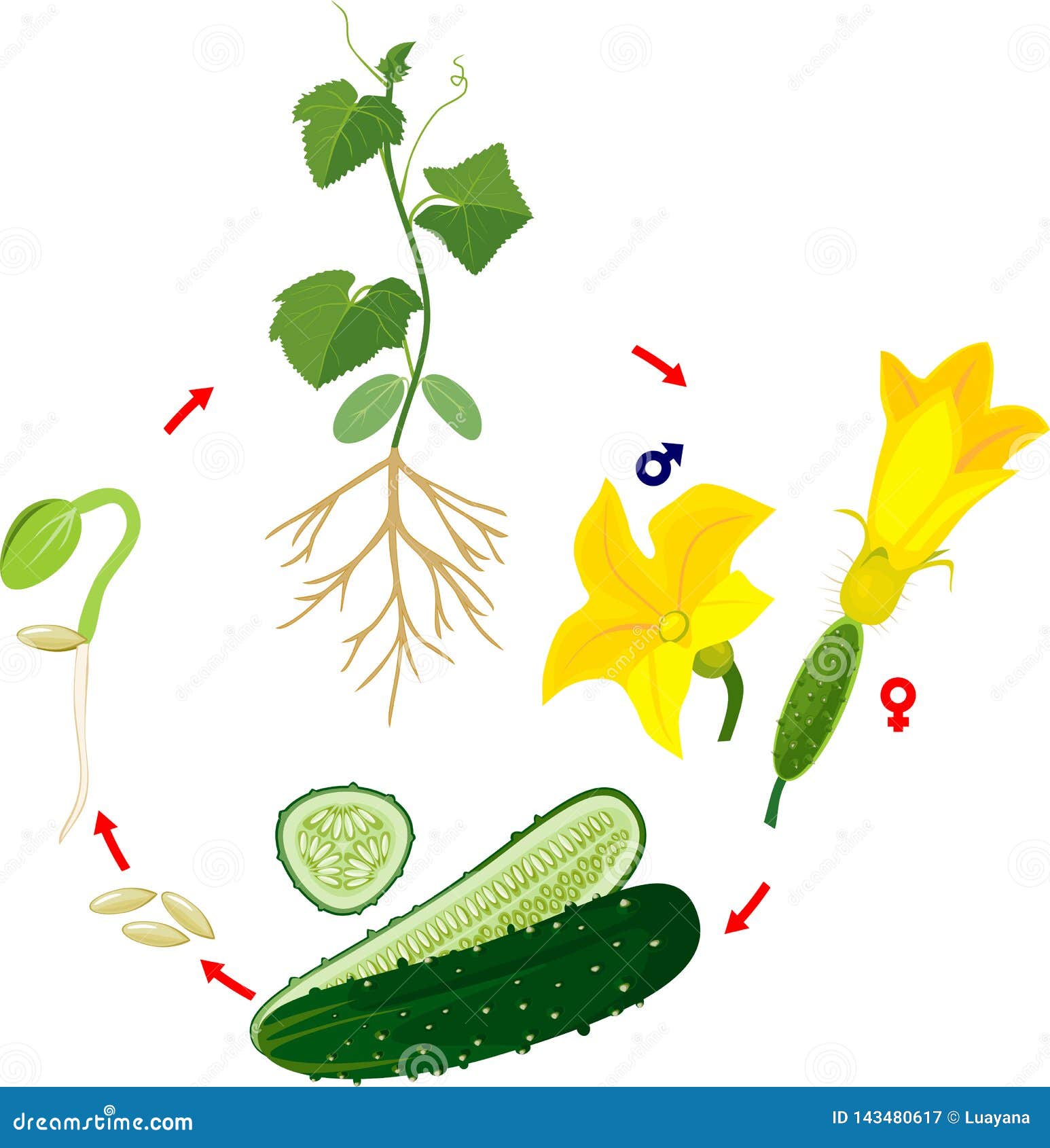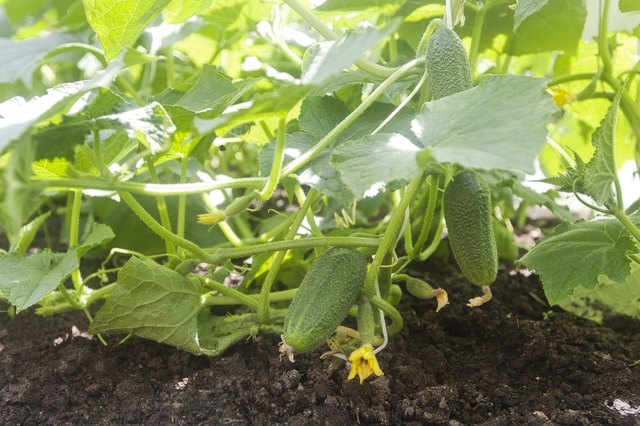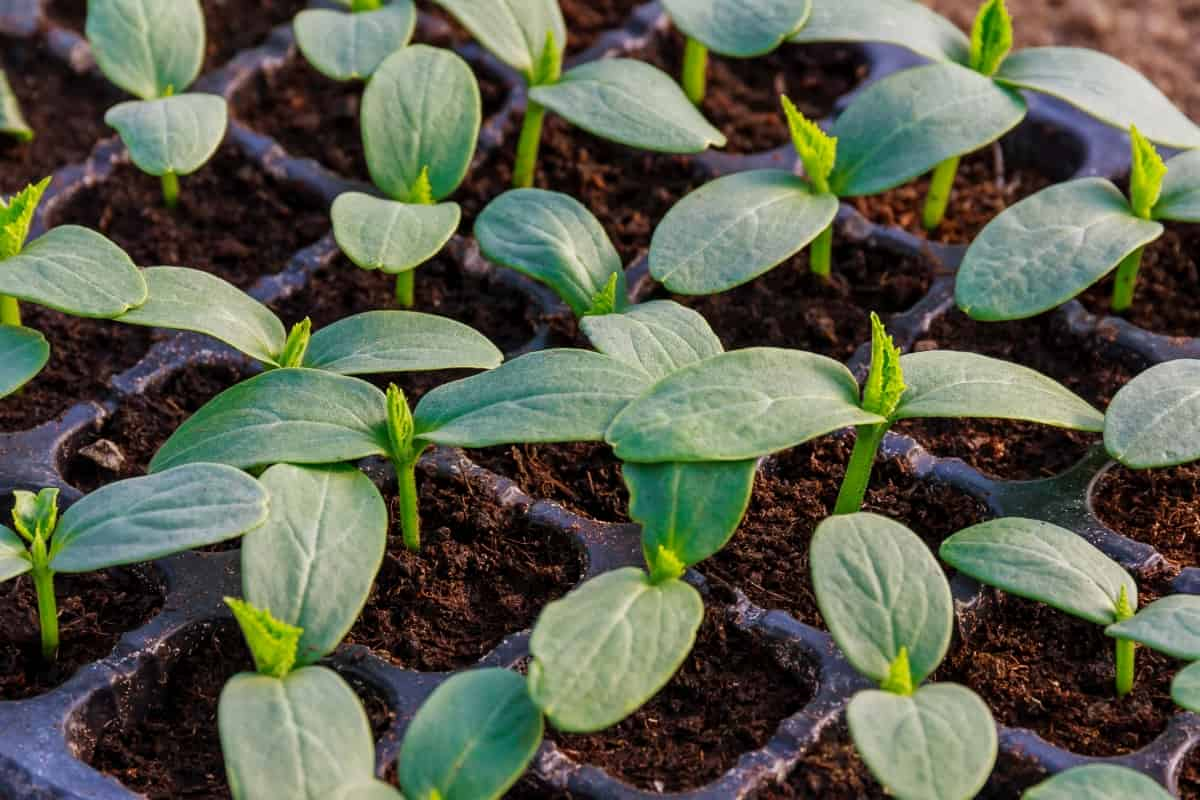Understanding the Life Cycle of Cucumber Seedlings
Cucumber seedlings undergo a series of developmental stages, from germination to transplanting, each critical for optimal growth. Recognizing these stages is essential for providing the right conditions and care to promote healthy development. The life cycle of cucumber seedlings can be divided into four main stages: germination, seedling establishment, transplanting, and vegetative growth.
Germination typically occurs within 3-5 days after sowing, when the seeds absorb water and the embryo begins to grow. During this stage, the seed coat cracks open, and the radicle (primary root) emerges, followed by the cotyledon (seed leaf). The seedling establishment stage lasts around 1-2 weeks, during which the seedling develops its first set of true leaves and the root system expands.
As the seedling grows, it becomes ready for transplanting, usually within 1-2 weeks after the seedling establishment stage. This stage is critical, as it requires careful handling to minimize transplant shock. Finally, the vegetative growth stage begins, during which the seedling develops its stem, leaves, and root system, eventually producing flowers and fruit.
Understanding the life cycle of cucumber seedlings is crucial for providing the right conditions and care to promote healthy development. By recognizing these stages, growers can optimize their care and management strategies to ensure robust and productive plants. When searching for information on what do cucumber seedlings look like, it’s essential to consider the specific stage of development, as the appearance of the seedling changes significantly throughout its life cycle.
Visual Characteristics of Cucumber Seedlings
When searching for information on what do cucumber seedlings look like, it’s essential to understand the physical characteristics of these young plants. Cucumber seedlings have distinct visual features that can help identify them. The first set of leaves, known as cotyledons, are typically oval-shaped and have a smooth, waxy texture. These leaves are usually a bright green color and are arranged oppositely on the stem.
As the seedling grows, the true leaves emerge, which are larger and have a more complex shape. The true leaves are typically triangular or lance-shaped, with a pointed tip and serrated edges. The leaves are arranged alternately on the stem, and the stem itself is usually slender and green. The stem may have a slightly fuzzy texture, especially when the seedling is young.
The roots of cucumber seedlings are also worth noting. The primary root, also known as the radicle, is usually white and taproot-like, while the secondary roots are smaller and more fibrous. The roots are responsible for absorbing water and nutrients from the soil, so it’s essential to provide the seedlings with a well-draining potting mix and adequate moisture.
When examining cucumber seedlings, look for the following visual characteristics:
- Bright green color
- Oval-shaped cotyledons
- Triangular or lance-shaped true leaves
- Slender, green stem
- White, taproot-like primary root
By recognizing these visual characteristics, you can identify healthy cucumber seedlings and provide them with the best possible care. Remember to handle the seedlings gently and avoid exposing them to extreme temperatures or light conditions.
How to Recognize Healthy Cucumber Seedlings
When searching for information on what do cucumber seedlings look like, it’s essential to recognize the signs of healthy growth. Healthy cucumber seedlings exhibit vigorous growth, bright green color, and sturdy stems. The leaves are typically a deep green color, and the stems are strong and upright. The seedlings should also have a well-developed root system, which is essential for absorbing water and nutrients from the soil.
To inspect cucumber seedlings for signs of stress or disease, look for the following:
- Yellowing or browning leaves, which can indicate overwatering or nutrient deficiencies
- Wilting or droopy stems, which can indicate underwatering or root bound conditions
- White, cottony patches on the leaves or stems, which can indicate powdery mildew or other fungal diseases
- Holes or tears in the leaves, which can indicate pest infestations such as aphids or whiteflies
If you notice any of these signs, take action immediately to correct the problem. Adjust the watering schedule, provide more light, or treat the seedlings with organic pest control methods. By recognizing the signs of healthy growth and taking prompt action to address any problems, you can help your cucumber seedlings develop into robust and productive plants.
In addition to inspecting the seedlings for signs of stress or disease, it’s also essential to provide them with optimal growing conditions. This includes maintaining a consistent temperature between 65-75°F (18-24°C), providing high humidity, and ensuring adequate light. By providing the right conditions and care, you can help your cucumber seedlings thrive and develop into healthy, productive plants.
Common Mistakes to Avoid When Growing Cucumber Seedlings
When growing cucumber seedlings, it’s essential to avoid common mistakes that can hinder their growth and development. One of the most common mistakes is overwatering, which can lead to root rot and other problems. To avoid overwatering, make sure to check the soil moisture regularly and only water when the soil feels dry to the touch.
Underwatering is another common mistake that can cause cucumber seedlings to become stressed and weak. To avoid underwatering, make sure to water the seedlings regularly, but avoid getting the leaves wet to prevent fungal diseases.
Inadequate light is another common mistake that can hinder cucumber seedling growth. Cucumber seedlings need bright, indirect light to photosynthesize and grow. To provide adequate light, place the seedlings in a sunny windowsill or under grow lights.
Other common mistakes to avoid when growing cucumber seedlings include:
- Using low-quality potting soil that lacks essential nutrients
- Failing to provide adequate air circulation, which can lead to fungal diseases
- Not providing enough support for the seedlings as they grow
- Not monitoring the temperature, which can affect seedling growth and development
By avoiding these common mistakes, you can help your cucumber seedlings grow and develop into healthy, productive plants. Remember to provide optimal growing conditions, including temperature, humidity, and light, and to monitor the seedlings regularly for signs of stress or disease.
When searching for information on what do cucumber seedlings look like, it’s essential to consider the potential mistakes that can affect their growth and development. By being aware of these common mistakes, you can take steps to prevent them and promote healthy growth in your cucumber seedlings.
The Importance of Providing Optimal Growing Conditions
Providing optimal growing conditions is crucial for the healthy development of cucumber seedlings. Temperature, humidity, and light are the three most important factors to consider when creating a suitable environment for seedling growth.
Temperature is a critical factor in seedling growth, and cucumber seedlings prefer temperatures between 65-75°F (18-24°C) during the day and around 55-65°F (13-18°C) at night. Avoid placing seedlings near heating or cooling vents, fireplaces, or drafty windows, as this can cause temperature fluctuations that can stress the seedlings.
Humidity is also essential for seedling growth, and cucumber seedlings prefer a relatively high humidity of 50-70%. To maintain optimal humidity, you can cover the seedlings with a clear plastic bag or a cloche, or place the pot on a tray filled with water and pebbles.
Light is another critical factor in seedling growth, and cucumber seedlings require bright, indirect light to photosynthesize and grow. Place the seedlings in a sunny windowsill or under grow lights, but avoid direct sunlight, which can cause overheating and stress.
In addition to temperature, humidity, and light, it’s also essential to provide cucumber seedlings with optimal air circulation. Good air circulation helps to prevent fungal diseases and promotes healthy growth. To ensure optimal air circulation, make sure to provide enough space between the seedlings and avoid overcrowding.
By providing optimal growing conditions, you can help your cucumber seedlings develop into healthy, robust plants. Remember to monitor the seedlings regularly and adjust the growing conditions as needed to ensure optimal growth.
When searching for information on what do cucumber seedlings look like, it’s essential to consider the importance of providing optimal growing conditions. By creating a suitable environment for seedling growth, you can promote healthy development and encourage the seedlings to develop into productive plants.
How to Transplant Cucumber Seedlings Successfully
Transplanting cucumber seedlings from indoor containers to outdoor gardens or larger pots can be a challenging process, but with the right techniques, you can minimize transplant shock and ensure successful growth. Here’s a step-by-step guide on how to transplant cucumber seedlings successfully:
Step 1: Prepare the Soil
Before transplanting, make sure the soil in the outdoor garden or larger pot is well-draining and rich in organic matter. Add compost or well-rotted manure to the soil to improve its fertility and structure.
Step 2: Harden Off the Seedlings
About 7-10 days before transplanting, start hardening off the cucumber seedlings by gradually exposing them to outdoor conditions. Start by moving the seedlings to a shaded area outdoors for 1-2 hours a day, then gradually increase the duration and intensity of the sunlight over the next few days.
Step 3: Transplant the Seedlings
When transplanting, handle the seedlings gently to avoid damaging the roots or stems. Dig a hole in the soil that is about twice as wide and just as deep as the pot. Place the seedling in the hole, making sure the soil level is the same as it was in the pot. Fill in the hole with soil, gently firming it around the roots to prevent air pockets.
Step 4: Water and Mulch
Water the seedlings thoroughly after transplanting, and mulch around the plants to retain moisture and suppress weeds. Keep the soil consistently moist during the first few weeks after transplanting, but avoid overwatering, which can lead to root rot and other problems.
By following these steps, you can successfully transplant your cucumber seedlings and give them the best chance to grow into robust and productive plants. Remember to monitor the seedlings regularly and adjust the growing conditions as needed to ensure optimal growth.
When searching for information on what do cucumber seedlings look like, it’s essential to consider the importance of proper transplanting techniques. By handling the seedlings gently and minimizing transplant shock, you can promote healthy growth and encourage the seedlings to develop into productive plants.
Troubleshooting Common Problems with Cucumber Seedlings
Despite proper care and attention, cucumber seedlings can still encounter problems that can hinder their growth and development. Here are some common problems that can arise when growing cucumber seedlings, along with solutions and advice on how to overcome these challenges:
Pests:
- Aphids: These small, soft-bodied insects can cause curled or distorted leaves. Use neem oil or insecticidal soap to control aphid populations.
- Whiteflies: These tiny insects can cause yellowing or stunted growth. Use yellow sticky traps or insecticidal soap to control whitefly populations.
- Spider mites: These tiny, spider-like insects can cause yellowing or bronzing of leaves. Use neem oil or insecticidal soap to control spider mite populations.
Diseases:
- Powdery mildew: This fungal disease can cause a white, powdery coating on leaves. Use fungicides or remove infected leaves to control powdery mildew.
- Downy mildew: This fungal disease can cause yellowing or stunted growth. Use fungicides or remove infected leaves to control downy mildew.
- Root rot: This fungal disease can cause soft, mushy roots. Use fungicides or improve soil drainage to control root rot.
Nutrient deficiencies:
- Nitrogen deficiency: This can cause yellowing or stunted growth. Use nitrogen-rich fertilizers to correct nitrogen deficiency.
- Phosphorus deficiency: This can cause stunted growth or poor fruiting. Use phosphorus-rich fertilizers to correct phosphorus deficiency.
- Potassium deficiency: This can cause yellowing or stunted growth. Use potassium-rich fertilizers to correct potassium deficiency.
By being aware of these common problems and taking prompt action to address them, you can help your cucumber seedlings overcome these challenges and develop into robust and productive plants.
When searching for information on what do cucumber seedlings look like, it’s essential to consider the potential problems that can arise during growth and development. By troubleshooting common problems and taking corrective action, you can promote healthy growth and encourage the seedlings to develop into productive plants.
Encouraging Strong Growth in Cucumber Seedlings
To promote strong growth in cucumber seedlings, it’s essential to provide them with the right nutrients, pruning, and training. Here are some tips to encourage seedlings to develop into robust and productive plants:
Fertilization:
- Use a balanced fertilizer that contains equal amounts of nitrogen, phosphorus, and potassium.
- Apply the fertilizer at half the recommended strength to avoid burning the roots.
- Feed the seedlings once a week, or as recommended on the fertilizer package.
Pruning:
- Remove any weak or spindly growth to promote bushy growth and prevent the seedlings from becoming leggy.
- Pinch off the tips of the seedlings to encourage branching and promote fruiting.
- Remove any lower leaves that are touching the soil to prevent fungal diseases from developing.
Training:
- Provide a trellis or other support for the seedlings to climb on.
- Train the seedlings to grow up the trellis by gently twining the stems around the support.
- Keep the seedlings well-watered and fertilized to promote healthy growth and fruiting.
By following these tips, you can encourage your cucumber seedlings to develop into robust and productive plants. Remember to monitor the seedlings regularly and adjust the growing conditions as needed to ensure optimal growth.
When searching for information on what do cucumber seedlings look like, it’s essential to consider the importance of providing optimal growing conditions and proper care. By following these tips and providing the right nutrients, pruning, and training, you can promote healthy growth and encourage the seedlings to develop into productive plants.








